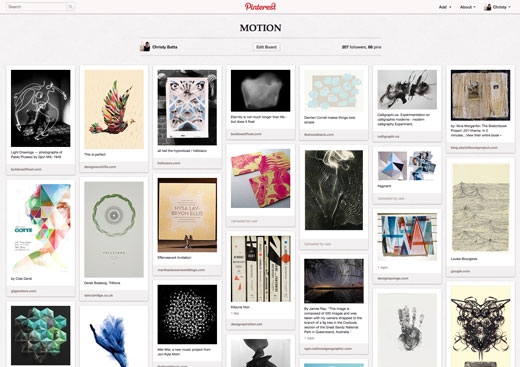Mood Boards: Your Designer’s Best Friend for Communicating Visual Direction, Guest Blog by Christine Batta

Photo and Blog courtesy of SW Creatives
“WE DIG INTO CULTURAL TRENDS, OUR COLLECTIVE MEMORY BANKS, PAST STUDIES AND RELEVANT ARCHIVES TO GATHER IMAGERY. VISUALS THAT WE BELIEVE ARE RELEVANT TO THE BRAND AND COMPELLING TO THE PEOPLE A BRAND SEEKS TO CONNECT WITH. THIS IS WHERE THE DESIGNING STARTS—AS WE BEGIN TO TURN WORDS INTO PICTURES—AS WE CREATE A HOLISTIC, VISUAL EXPRESSION OF OUR BRIEF. WE CREATE A COLLAGE, ALONG WITH OUR CLIENTS, TO ESTABLISH AN AESTHETIC FILTER THROUGH WHICH DESIGN DECISIONS WILL BE MADE.”
JOE DUFFY IN EVERYONE’S A DESIGNER
One of the most exciting parts of a design process can be the mood boards phase. This is the point where we dive head-first into the design process of making an intangible feeling that only exists verbally into a visualized tangible product. It is also a device that prevents the design process from unraveling because the expectations of the client and designer clash.
A mood board is a format for pulling together existing imagery to discuss and narrow the goals for the mood or emotion a design should create. These goals are defined in collaboration by the designer and client. The imagery serves both as something concrete to help everyone unite on the same page and as inspirational momentum to push the visual creativity forward.
I think of mood boards as a tool for clarifying the communication that has already begun between the designer and client. At the beginning of a project, we will have a conversation with the client about their hopes, goals and visions for the project and for their organization. The designer will pull together imagery that represents relevant words and feelings from these conversations in order to discuss and agree upon the direction that the design details need to follow. This foundation has to be very solid before we can go about building up the design decisions about typography, color and graphic style. Such factors are meaningless without a purpose of impacting the viewer with a certain feeling.
When we start to analyze the initial building-block conversations, you often come across critical terms being used which may not be as universal as you felt when the word was first added to the process. One example of this would be something as simple as the goal of having a ‘magical’ theme for a design piece. In this instance, we had to break the term magical down into different concepts of ‘magic’ in order to narrow the term to match the precise goals of the client.
“WORDS FAIL MISERABLY WHEN TRYING TO TRANSLATE DESIGN CONCEPTS. WHAT ONE PERSON CALLS ‘EDGY’ ANOTHER MIGHT SEE AS CHAOTIC.”
MINDY WAGNER IN WHY MOOD BOARDS MATTER
In addition to the example of ‘magical’ having its different meanings, there are also words that probably mean something to every single person on the planet based on their personal experience. Mood boards help us pinpoint what kind of ‘fresh’ and what version of ‘inviting’ and just how ‘out-of-the-box’ clients mean when they use these terms.
Putting together a mood board is often a very dynamic process. I will be brainstorming all possibilities when I gather images to share with a client. Designers often have large reserves of stored and bookmarked images to make creating a mood board a very fluid process. I will spend my extra minutes between tasks scanning blogs for potentially useful pieces to store in my Pinterest account. Later, being able to sort through all the masses of images accessible to those that will generate productive discussion requires the designer’s expertise. Curating my stash for images that are relevant to a specific project is an art in itself.
It is challenging to step outside of yourself to determine what certain words used to describe design goals mean to your client and then will mean for your target viewer. The mood board is critical to make designer-client communication precise, productive and positive. Read more about our experience creating the Community Impact Organization Annual Report. Mood boards were definitely a huge help with this project!
Does your nonprofit use a mood board? Have you found this article to be useful? Share your thoughts about this article with Maryland Nonprofits, connect with us on Facebook, Twitter, LinkedIn, and Google+!
Springtime is almost here, start the season with a new career, follow @MDNonprofitJobs
